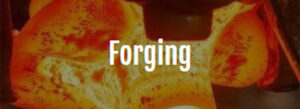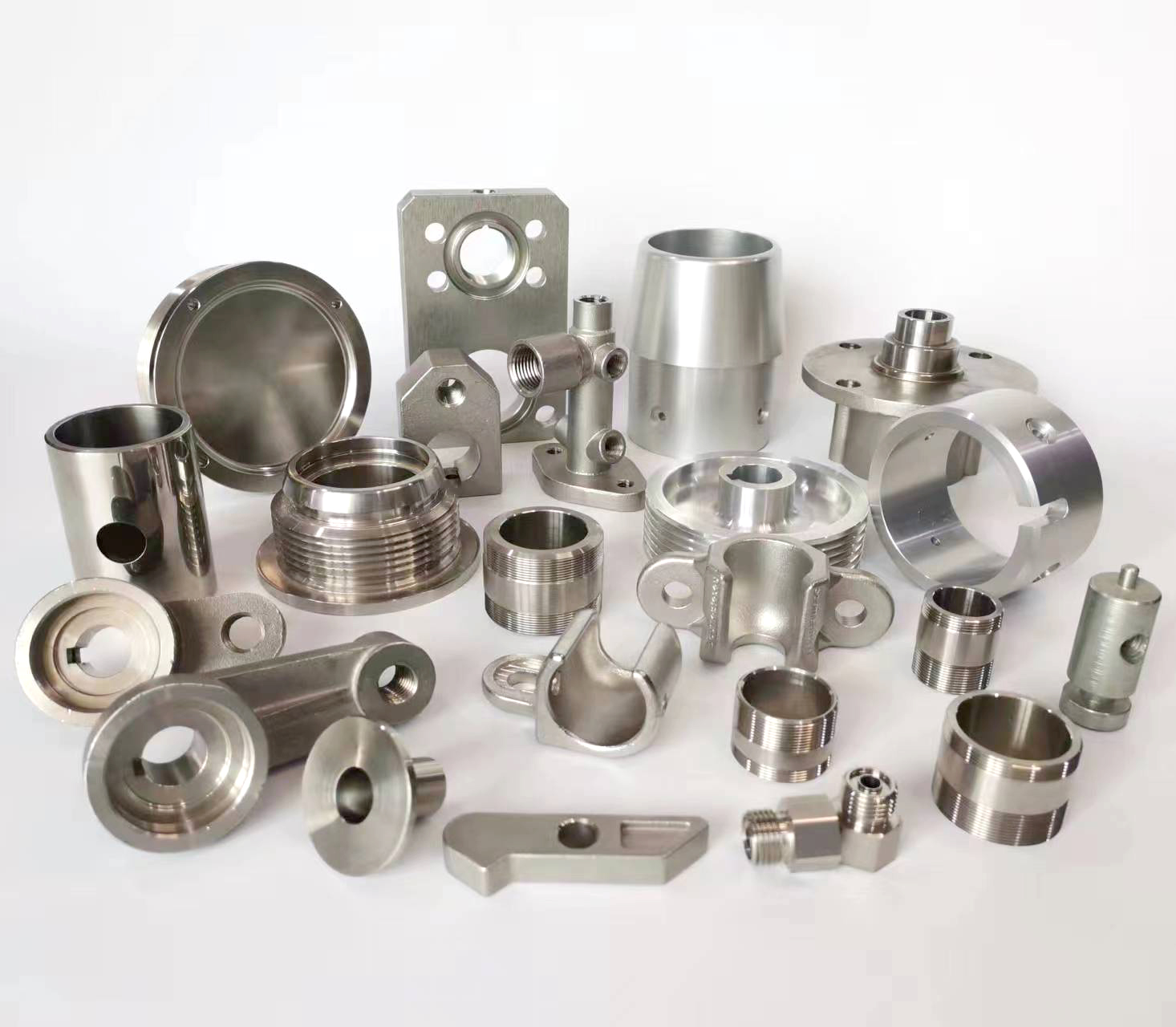
Forging is a manufacturing process where metal is shaped using localized compressive forces, typically from a hammer or die. This process aligns the metal’s grain flow, enhancing its strength, toughness, and structural integrity. A wide range of materials can be forged, each chosen for specific mechanical properties and application requirements.
The materials are broadly categorized into the following groups:
1. Carbon Steels
Carbon steels are the most common and cost-effective materials for forging. Their properties are primarily determined by the amount of carbon they contain.
Low Carbon Steels (Mild Steels) (C: <0.25%): Excellent ductility and good weldability. They are easy to forge but cannot be hardened by heat treatment. Common grades include AISI/SAE 1005, 1010, 1018. Used for non-critical structural components, brackets, and automotive parts.
Medium Carbon Steels (C: 0.25% – 0.55%): Offer a good balance of strength, hardness, and ductility. They respond well to heat treatment (quenching and tempering). Common grades include AISI/SAE 1035, 1045, 1050. Widely used for high-strength automotive parts (crankshafts, connecting rods), gears, and tools.
High Carbon Steels (C: 0.55% – 1.0%): Very hard and strong but less ductile. They are more difficult to forge and require careful temperature control. They are used for cutting tools, springs, and high-strength wear-resistant parts. Common grades include AISI/SAE 1060, 1070, 1095.
2. Alloy Steels
Alloy steels incorporate other elements like Chromium (Cr), Nickel (Ni), Molybdenum (Mo), and Vanadium (V) to enhance specific properties such as hardenability, strength, wear resistance, and toughness, especially in larger sections.
Chromium-Molybdenum (Cr-Mo) Steels: Excellent high-temperature strength and creep resistance. Used for pressure vessels, piping, and power generation equipment. Common grades: 4140, 4150, 4340.
Nickel-Chromium-Molybdenum (Ni-Cr-Mo) Steels: Offer superior toughness and hardenability. Used for highly stressed components like aircraft landing gear, heavy-duty axles, and gears. Common grade: 4340.
Other Alloy Steels: Include grades like 4118 (for gears), 52100 (a high-carbon, high-chromium steel primarily for bearing components), and 8620 (a carburizing grade for case-hardened parts).
3. Stainless Steels
Stainless steels are chosen for their excellent corrosion and oxidation resistance, often maintained at high temperatures.
Austenitic Stainless Steels (e.g., 300 series): Non-magnetic, excellent formability, and corrosion resistance. 304 and 316 are the most common. Used in chemical processing equipment, food and beverage machinery, and architectural applications.
Martensitic Stainless Steels (e.g., 400 series): Magnetic, can be heat-treated to high strength and hardness, with moderate corrosion resistance. Common grades: 410, 420, 440C. Used for cutlery, valves, pumps, and turbine parts.
Ferritic Stainless Steels (e.g., 430): Magnetic, with good corrosion resistance but not hardenable by heat treatment. Less common in forging than austenitic and martensitic types.
Duplex Stainless Steels (e.g., 2205): Feature a mixed austenitic-ferritic microstructure, offering very high strength and excellent resistance to stress corrosion cracking. Used in demanding offshore and chemical environments.
4. Aluminum Alloys
Forged aluminum parts are lightweight with an excellent strength-to-weight ratio. They are commonly used in aerospace, automotive, and sporting goods.
2xxx Series (Al-Cu alloys): High strength and excellent fatigue resistance. 2014, 2024, 2219 are commonly forged for aerospace structural components.
6xxx Series (Al-Mg-Si alloys): Good combination of corrosion resistance, formability, and medium strength. 6061 is a very common general-purpose forging alloy.
7xxx Series (Al-Zn alloys): Among the highest strength aluminum alloys. 7075 is extensively used in high-stress aerospace applications.
5. Titanium Alloys
Titanium alloys are prized for their exceptional strength-to-weight ratio, outstanding corrosion resistance, and ability to perform at high temperatures.
Commercially Pure (CP) Ti (Grades 1-4): Excellent corrosion resistance and formability but lower strength.
Ti-6Al-4V (Grade 5): The workhorse alloy of the titanium industry. It accounts for about 50% of all titanium usage. Used extensively in aerospace engines and airframes, medical implants, and high-performance automotive components.
Other Alloys: Such as Ti-6Al-2Sn-4Zr-2Mo (Ti-6-2-4-2) for high-temperature jet engine parts.
6. Nickel-Based Superalloys
These are high-performance alloys designed for extreme environments, exhibiting excellent mechanical strength, creep resistance, and stability at high temperatures, along with corrosion resistance.
Inconel 718: One of the most widely forged superalloys. Used in jet engines, gas turbines, and rocket engines.
Inconel 625, Waspaloy, René 41, Haynes 282: Other common forged superalloys for the most demanding aerospace and energy applications.
7. Copper and Copper Alloys
Forged for their excellent electrical and thermal conductivity, corrosion resistance, and anti-microbial properties.
Copper (C11000): Used for electrical components and conductors.
Brass (Copper-Zinc alloys, e.g., C36000): Good machinability and corrosion resistance. Used for valves, fittings, and architectural hardware.
Bronze (Copper-Tin alloys, e.g., C95500): High strength and excellent wear resistance. Used for bearings, bushings, and marine components.
8. Other Specialized Alloys
Magnesium Alloys: Extremely lightweight. They are forged for applications where weight saving is critical (e.g., aerospace, racing wheels), though they are less common due to flammability risks during processing.
Tantalum & Zirconium: Used almost exclusively for their phenomenal corrosion resistance in the chemical processing industry.
Key Factors in Selecting a Forging Material:
Mechanical Properties Required: Strength, toughness, hardness, fatigue life.
Service Environment: Exposure to corrosion, high temperature, or radiation.
Weight Constraints: The strength-to-weight ratio is critical in aerospace and automotive industries.
Cost and Machinability: Material cost and the ease of post-forging machining.
Hardenability: The ability to achieve desired properties through heat treatment.
Forgability: How easily the material can be deformed without cracking.
In summary, the choice of forging material is a critical decision based on a component’s intended function, the environment it will operate in, and overall cost considerations. The forging process itself enhances the inherent properties of all these materials, making them ideal for safety-critical and high-performance applications.





